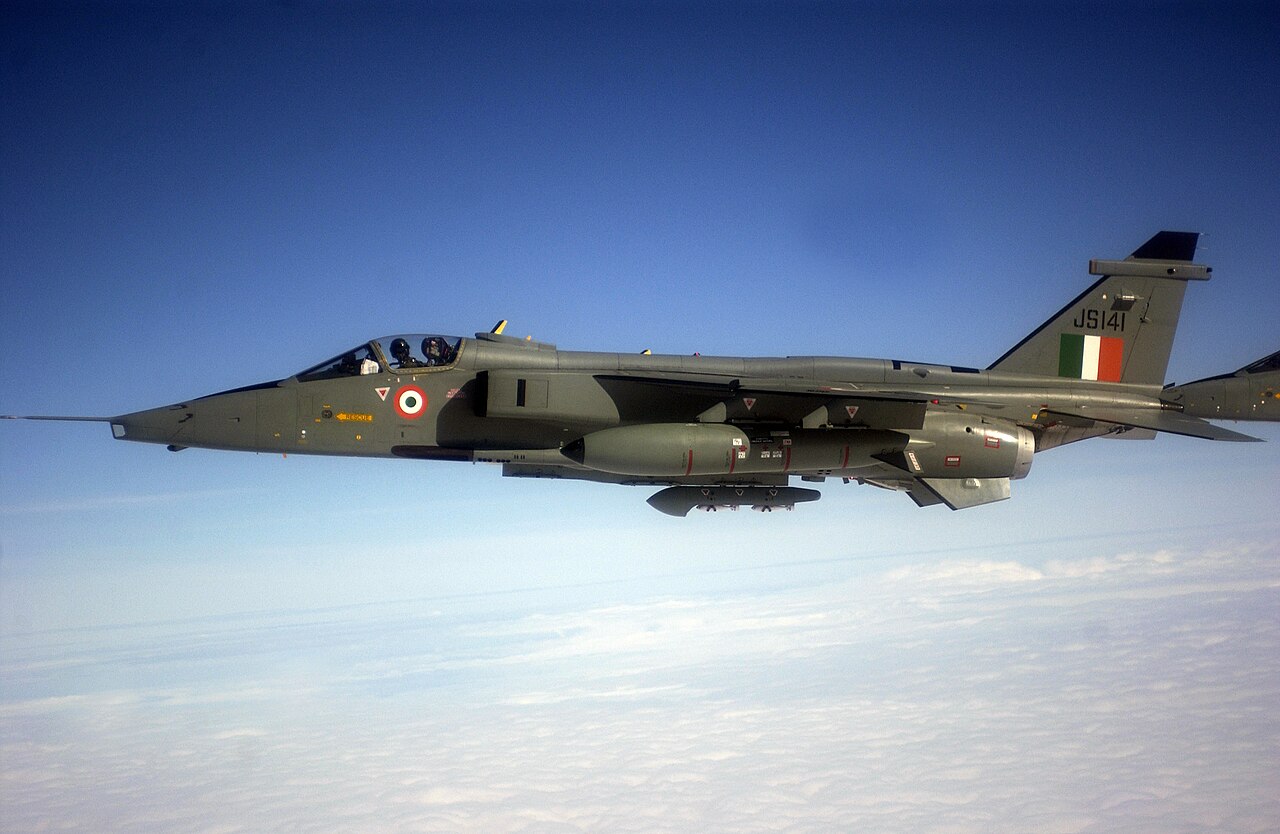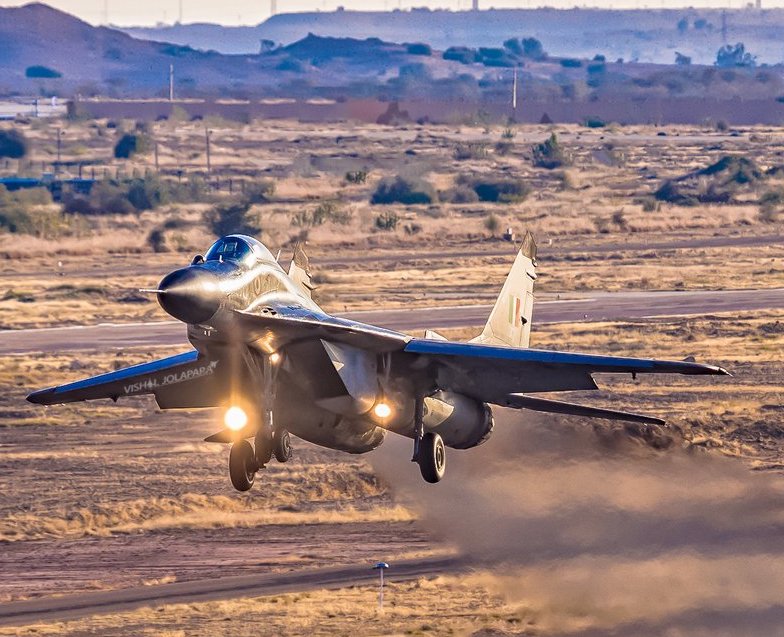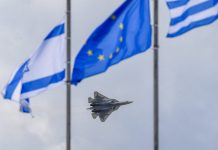In a strategic collaboration, a US-based defense firm will overhaul and upgrade the ageing Soviet-vintage MiG-29 fighter jets flying with the Indian Air Force. The defense firm has signed an agreement with the Indian company Reliance Defence to support India’s growing Maintenance, Repair and Overhaul (MRO) requirements.
The agreement encompasses providing MRO support across various platforms, with the Soviet vintage fighter jets operated by the IAF and the Indian Navy.
It will be one of the rare instances when a US firm will play a role in maintenance and mid-life extensions of Soviet-made fighter jets operated by a third party.
The US defense contractor, authorised by the Pentagon, has entered an agreement with Reliance Defence. The value of the contract is estimated to be around USD 2.34 billion.
Besides MIG-29 UPG with the IAF and MIG-29Ks with the Indian Navy, the agreement covers the MRO facilities of 100 Jaguar strike aircraft, Apache AH-64 attack helicopters used by the Indian Army, and Soviet vintage L-70 air defense guns.
The MRO facilities will be set up at the MIHAN hub in Nagpur to support both Indian and global defense clients for air and land platforms. The IAF presently operates over 50 MiG-29s, and the Indian Navy has 40 carrier-based MiG-29Ks.
Coastal Mechanics is a US Department of Defense-approved contractor. The company specializes in the repair, upgrade, and reverse engineering of legacy military systems, particularly for obsolete or discontinued components.
It has conducted sustainment work for a wide range of systems, including F-15, F-16, F/A-18, A-10, F-4, and AV-8B aircraft, as well as helicopters like the AH-1 Cobra, UH-1 Huey, UH-60 Blackhawk, SH-60 Seahawk, and AH-64 Apache.
It also maintains capabilities related to radar systems (AN/FPS-117, AN/TPS-43, AN/TPQ-36/37), missiles (AIM-9, AIM-7, TOW), and air defense systems such as PATRIOT, HAWK, and NIKE-HERCULES.
Its core competencies include lean manufacturing, legacy MRO, repair and return services, and full turn-key upgrade support. For systems lacking OEM support, the company uses indigenous small-batch machining and technical libraries based on Depot Maintenance Work Requirements (DMWRs) and Technical Orders to ensure operational continuity.
This experience will come in handy as it helps India to set up MRO for the legacy fighter jets like MiG-29s and Jaguars. Besides the Ukraine-Russia war making it difficult to access spare parts for MiG-29s, the fact that the IAF remains the only operator of Jaguars does not make it easy to find components. The partnership is likely to entail a bit of reverse engineering and manufacturing of components not available elsewhere.

The MiG-29 first went into production in the erstwhile USSR in August 1983. It was developed and inducted into the Soviet Air Force during the Cold War.
It was designed as an answer to the American F-15 Eagle and F-16 Falcon. The aircraft was believed to be comparable to the two ace American fighters and even more advanced than them in certain areas.
The US officials were intrigued with the MiG-29 Fulcrum since the day they first spotted it in satellite images. They saw a sophisticated, sleek-looking fighter that could challenge the best US Air Force fighter jets of the time. Some US officials openly acknowledged that the Soviets were catching up with US aircraft technology.
The MiG-29, known as “Baaz” in the IAF, was inducted into the IAF in 1987. The Indian government signed a contract for the MiG-29 in September 1986, with deliveries starting in mid-1987. The IAF operates three units of MiG-29s.
World’s Most “Shot Down” Weapon? How C-UAS Tech Is Tackling Drone Threats & Changing The Game: OPED
In 1994, another order was placed for 10 aircraft, including a trainer. The last batch of aircraft was said to be the Fulcrum-C version, and its radars allow it to lock on to two targets simultaneously. It has the capability to carry drop tanks under its wings.
So far, the MiG-29s were sent to the 11 Base Repair Depot, Ozhar, for major overhauls. In March 2008, the IAF inked a contract for mid-life upgradation of 63 single-seaters with RAC-MiG, Russia. The deal was valued at USD 964 million. The midlife upgrade extended the life of the airframes by another 15 years or 1000 hours.

From Concorde To Jaguar Fighter Jets — UK-France Alliance Deepens With Storm Shadow & Nuclear Pact
With Russia tied down in a three-year-old war with Ukraine, India is finding it difficult to source spare parts from Russia. Facing a shortage of fighter jets and the delay in the supply of indigenous Light Combat Aircraft LCA MK1A, India is looking for alternative supply chains and strategies to keep its fleet flying.
Reliance Defence does not foresee direct competition with the IAF’s existing base repair depots, as its focus will be on regular overhauls and life cycle extensions, thereby complementing the armed forces’ current maintenance infrastructure.
The partnership is in line with India’s strategic shift toward performance-based logistics (PBL)—a model that emphasizes targeted modernization and serviceability over full-scale replacement of legacy equipment. This reflects the country’s broader effort to enhance defense readiness while ensuring cost-effective lifecycle management of critical military assets.
Not Nuclear Or TNT, China’s H-Bomb May Spark Global Firestorm; Here’s Why It’s Much More Destructive
India has also been seeking to establish itself as an MRO hub for countries in Southeast Asia that operate Russian platforms, aiming to boost its defense exports.
India has set an ambitious goal to secure a $4 billion share of the global MRO market by 2031, positioning itself as a formidable competitor alongside established leaders in the US and Europe.
India’s shift towards the US is necessitated by geopolitics
Two decades ago, the US defense sales to India were almost zero. Now, the two countries are discussing the joint production of major systems. Today, the US accounts for 10 percent of India’s defense imports (by value).
India is one of the world’s largest defense importers, accounting for nearly 10 percent of global arms imports from 2008 to 2023. Although Russia is still India’s biggest weapons supplier, weapons sales from the US to India have increased dramatically.
Before 2008, the US-India defense trade was restricted to naval helicopters and counter-battery radars in the mid-2000s. In 2007, the US also provided India with an amphibious transport dock ship under the US Excess Defense Articles program—the former USS Trenton, now the INS Jalashwa.
Now, India has contracted for nearly US$20 billion worth of US-origin military equipment since 2008, according to the Defense Department. Most of the deals with the US have been made through the Foreign Military Sales route.
In the last 15 years, India has purchased a C-130J Super Hercules special mission aircraft, a C-17 Globemaster III heavy lifter, and P-8I Poseidon anti-submarine warfare aircraft.
In fact, outside the US, India is the largest operator of C-17s and P-8s. In the rotary wing department, India has purchased attack helicopters CH-47F Chinooks, MH-60R Seahawks, and AH-64E Apaches.
Other purchases include Harpoon anti-ship missiles and M-777 howitzers. The two countries have inked an agreement to jointly produce advanced F-414 jet engines in India.
The purchase of 31 MQ-9B Sea Guardian and Sky Guardian unmanned aerial vehicles for more than US$3 billion is in the pipeline. The two countries are also discussing jointly producing Stryker Armoured vehicles and Javelin anti-tank missiles.
After inducting its last warship manufactured in Russia and the two remaining units of S-400 from Russia, India doesn’t have a pending defense order with Russia. And just like other allies of Russia, like Malaysia and Armenia, India is looking to secure an alternate supply chain for its legacy platforms of Soviet origin.




